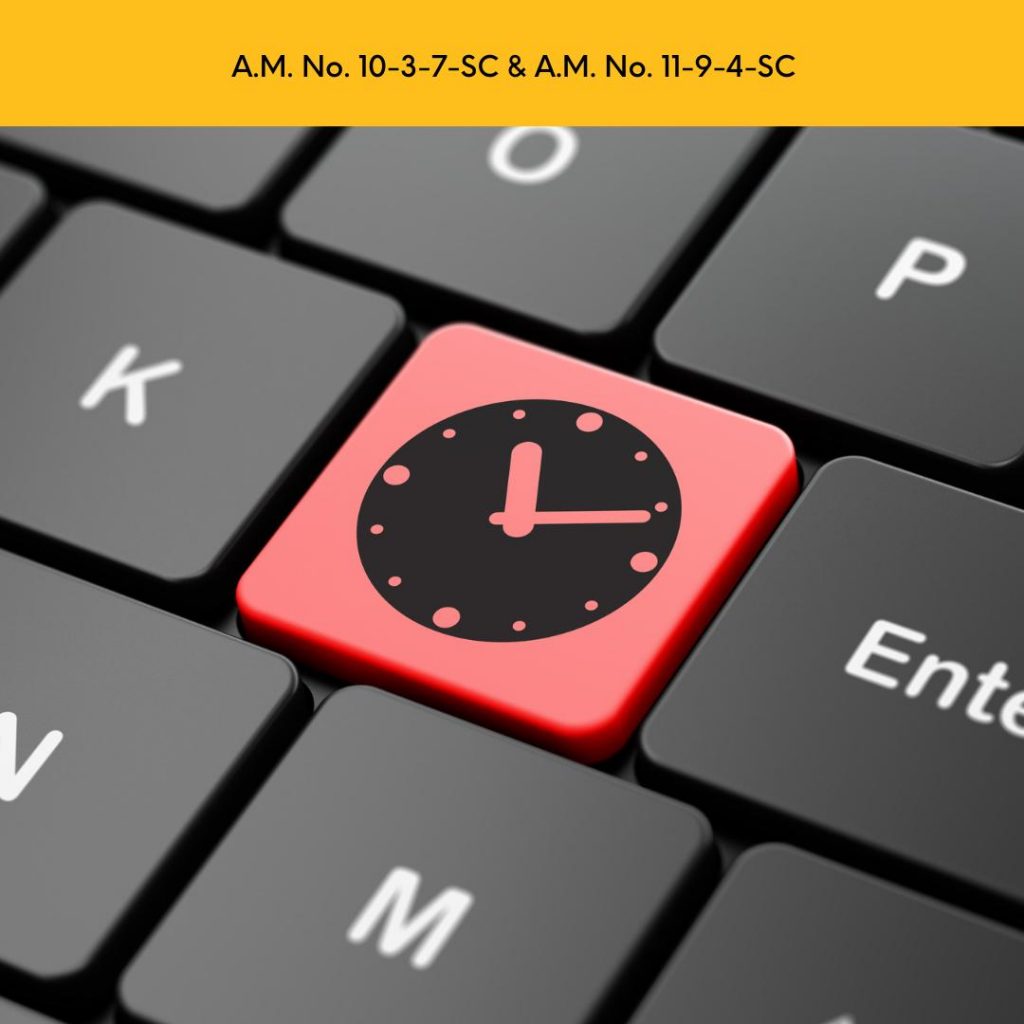
Published 22 August 2025, The Daily Tribune
One of the defining goals of judicial reform in the country is the push for a technology-driven Judiciary. The Supreme Court has long recognized that efficiency in the courts cannot be achieved if the system remains tied to outdated, paper-heavy processes. Thus, it promulgated A.M. No. 10-3-7-SC and A.M. No. 11-9-4-SC, better known as the Guidelines on the Submission of Electronic Copies of Pleadings and Other Court Submissions. This initiative, part of the Court’s broader effort to modernize, seeks not only to minimize paper use but more importantly, to facilitate the timely and fair delivery of justice.
Beginning 1 December 2024, electronic filing and service will no longer be optional—it will be mandatory. Courts, parties, and counsel are now required to adopt e-filing as the primary mode for pleadings, motions, and other court submissions in civil cases before first- and second-level courts. The only exceptions are summons and initiatory pleadings. Instead of the traditional trek to the courthouse to file physical copies, parties must submit PDF versions through email. This change, while significant, is consistent with the broader vision of an efficient and accessible justice system that meets the demands of the digital age.
Under the old rules, a lawyer or litigant could only file pleadings within court office hours—from 8:00 A.M. to 5:00 P.M. A single minute beyond 5:00 P.M., and a pleading would be considered filed the next day. The rigidity of this system often caused unnecessary prejudice, especially when delays in traffic, distance, or other circumstances intervened. With e-filing, however, a natural question arose: up to what time of the day can a pleading, motion, or court submission be filed electronically?
This very issue was put to the test in the landmark 2024 case of De Guzman-Lara v. COMELEC.
On 10 May 2022, at exactly 6:21 P.M., De Guzman-Lara filed by email a petition to disqualify then-candidate Mamba on the grounds of massive vote-buying and unlawful disbursement of public funds. The COMELEC En Banc dismissed the petition outright, ruling that since it was filed beyond office hours, it should be deemed filed at 8:00 A.M. of the next working day—thus rendering it late. The Commission anchored its decision on its Rules of Procedure, which pegged filings made beyond 5:00 P.M. as next-day submissions.
The Supreme Court thought otherwise. In reversing the COMELEC, it pointed out that the Rules refer to filing “within the day.” And under the Civil Code, a “day” means 24 hours, not just office hours. Hence, a petition filed at 6:21 P.M. on 10 May 2022 was still timely. It was filed “within the day,” even if after 5:00 P.M.
The Court’s reasoning was anchored in both law and common sense. With the advent of technology, email can be sent and received instantaneously. Unlike traditional filing that depended on physical offices closing at 5:00 P.M., electronic filing has no such limitation. The Court noted that institutions such as the COMELEC, which are equipped with modern technological resources, cannot plausibly claim they are unable to receive documents filed after office hours. In fact, the very nature of electronic communication is that it transcends physical barriers and temporal restrictions.
This ruling underscores an important principle: the law must evolve alongside technology. The Judiciary cannot be blind to the realities of modern communication and should not perpetuate rules that are inconsistent with the very purpose of technology—to make processes faster, easier, and more efficient. By recognizing that a day is 24 hours for purposes of electronic filing, the Court has effectively expanded access to justice. Litigants and lawyers now have the assurance that their filings remain valid as long as they are sent “within the day,” regardless of whether the clock strikes past five.
The decision in De Guzman-Lara is thus more than a technical ruling on deadlines. It is a forward-looking affirmation that justice must adapt to the times. It is an acknowledgment that while the law is steeped in tradition, it cannot remain static in the face of technological advancement. And most importantly, it is a reminder that procedural rules, while necessary, must not become instruments of injustice.
The digitalization of court processes is here to stay. By resolving the time limitation issue in e-filing, the Supreme Court has taken another step towards a justice system that is not only modern but also more accessible. In this way, technology becomes not a mere tool of convenience but a genuine instrument of fairness.
For more of Dean Nilo Divina’s legal tidbits, please visit www.divinalaw.com. For comments and questions, please send an email to cad@divinalaw.com.

